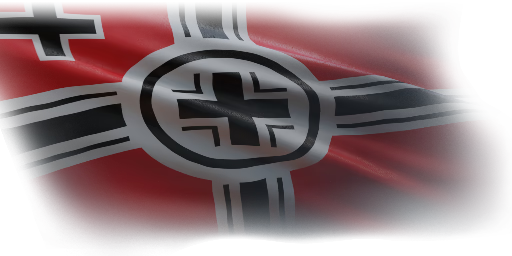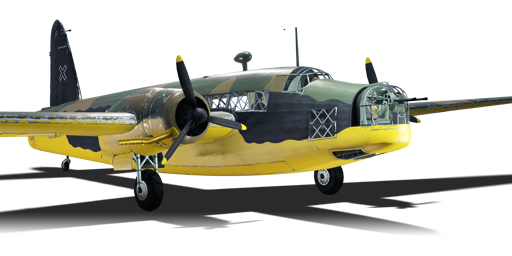

Aviation
▀Wellington Mk Ic
II
Rank
AB
2.0
RB
2.3
SB
3.0
Battle rating
Germany
Research country
Bomber
Main role

Premium vehicle
Status
General information
The Wellington Mk Ic (Germany) is a premium German bomber. It has been in the game since the start of the Open Beta Test prior to Update 1.27. It is on sale for 1,000 Golden Eagles.
The British Wellington and German Mk I's are identical. With its versatility, the captured Wellington is an excellent alternative to the He 111 H-6.
Wellingtons are great 2nd rank turret platforms with wide arcs and stable flight. If your flight controls are shot out, adjustment of engine power will allow stable flight and more opportunities to fight back. Just remember it has only 7.7 mm (.303 in) machine guns so it is more luck to earn kills with them.
As with all bombers, crew training with at least Expert Qualification is important for profitable missions.
Camouflages
Flight performance
Max speed
at 4,572 m
378351392365 km/h
Rate of Climb
5.346.74.1 m/s
Turn time
3537.23436.1 s
Max altitude
6,500 m
Takeoff Run
876 m
Landing
flaps
flaps
Take-off
flaps
flaps
Combat
flaps
flaps
Air
brake
brake
General characteristics
Crew
5 persons
Engine
Length
18.7 m
Wingspan
26.3 m
Wing Loading
159 kg/m²
Weight:
Base weight
9.7710.089.5310.03 t
Fuel in main tanks
2.53 t (4h 26m)
Limits:
Max Speed Limit (IAS)
530 km/h
Mach Number Limit
0.62 M
G limit
≈ -3/5 G
Flap Speed Limit (IAS)
L / T / C
223 / 264 / 315 km/h
Gear Speed Limit (IAS)
264 km/h
Defensive armament
2 × Turret — 7.7 mm Vickers K machine gun
Ammunition
966 rounds
Fire rate
950 shots/min
2 × Turret — 2 × 7.7 mm Browning machine gun
Ammunition
6,000 rounds
Fire rate
1,000 shots/min
One-second Burst Mass
0.17 kg
| Belt | Belt filling | Armor penetration (mm) at a distance: | |||||
|---|---|---|---|---|---|---|---|
| 10 m | 100 m | 500 m | 1000 m | 1500 m | 2000 m | ||
| T/AP/AP-I/Ball/Ball/I | 13 | 12 | 7 | 3 | 2 | 0 | |
| T/AP/AP/AP | 13 | 12 | 7 | 3 | 2 | 0 | |
| T/AP-I/AP-I/AP-I | 13 | 12 | 7 | 3 | 2 | 0 | |
Suspended armament
Setup 1
18 × G.P. 250 lb Mk.IV bomb
Setup 2
9 × G.P. 500 lb Mk.IV bomb
Economy
Repair cost
AB
686 

RB
4,423 

SB
1,606 

Crew training
4,800 

Experts
32,000 

Aces
250 

Research Aces
440,000 

Reward multiplier
AB / RB / SB
 2 x (70 / 225 / 245) %
2 x (70 / 225 / 245) % 
 2 x 124 %
2 x 124 % 

Premium vehicle
All modifications are unlocked
Flight performance | |
|---|---|
Survivability |
|---|
Weaponry |
|---|
Rating by players
You must play more than 3 battles for the last week and more than 10 battles in a vehicle to rate it.
Like:
17
Flight performance:
Not enough ratings
Survivability:
Not enough ratings
Aerial combat:
Not enough ratings
Ground attack:
Not enough ratings
Balance:
Not enough ratings
Tips & Tricks
This space is currently empty
Do you know any interesting vehicle features?
Loading...
No articles about this vehicle yet
Become the first author and get rewards!
Write a guide, tell about interesting historical facts, make a tutorial or simply an interesting post.
No more content